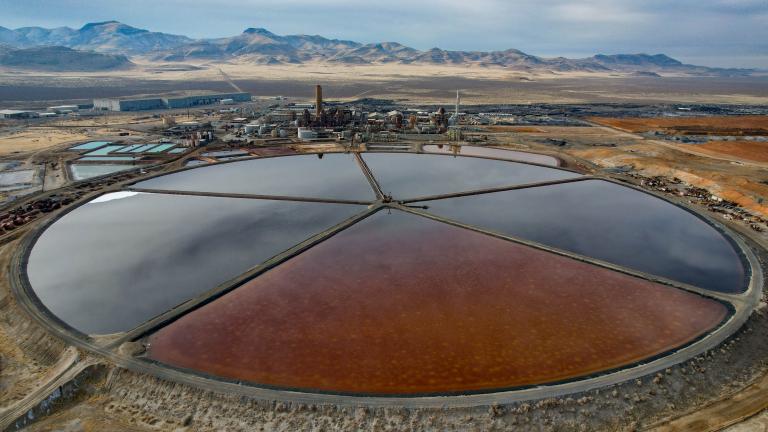Cross-posted from Climate Progress.
With major cuts to funding for federal clean energy programs coming over the next decade, the industry will need to lay out some clear priorities for the coming years. How can the industry balance the need to deploy projects with existing technologies while helping spur more innovation for new technologies and business models?
Energy Secretary Steven Chu recognizes the immense challenge that coming budget cuts will represent. In an interview with Greenwire, Chu explained his new approach to helping deploy renewables and efficiency:
“Now, since the amount of money one is going to have for doing these things is not going to be at Recovery Act scale, but we have a large deficit,” he said, “it is very important we work towards reducing this deficit. So where’s the best dollars and how could they be most highly leveraged?”
Over the past year and a half, Chu said, he’s begun gearing [Department of Energy]’s machinery — some parts smoothly, some parts with more resistance — toward a new strategy.
As he summarizes it: “It’s taking a more business approach to what is really happening.”
The perfect example of a more business-oriented approach is the SunShot Initiative — a program that encourages companies and municipalities to compete head-to-head in order to drive down costs in installation, permitting, and manufacturing. By offering rewards in different areas of innovation, the competitive process creates a “multiplier effect” for developing new technologies and business models, with the goal of driving down the installed cost of solar 75 percent by 2020.
In order to make the most of funds, competitive programs will be necessary, says Chu:
“This is in part because the amount of funds we expect going forward on some of these deployment things just won’t be there,” he said. “But fundamentally, it may not even be necessary if you get the right business models.”
It’s nice to know we have a forward-thinking energy secretary at the helm during one of the biggest boom-bust political cycles for clean energy in our history. But we still need some core programs that will provide financiers with the certainty they need to help deploy proven technologies.
We reached out to a variety of companies and analysts in the renewables and efficiency space and asked them for their top priorities. These explicitly excluded a price on carbon or a renewable energy standard — two incredibly important components that are unlikely to get traction in the near term. This is far from an exhaustive list, but simply an overview of what respondents answered.
Here are the top five:
Cash grant
The Treasury cash grant was one of the most important mechanisms for keeping momentum in the clean energy industry strong. With financial institutions tanking after 2008, there was very little “tax appetite” — meaning it was difficult to find a bank with enough tax liability to take advantage of production or investment tax credits.
The cash grant changed all that. By giving a project owner a cash payment for 30 percent of equipment costs up front, it opened up the project finance market to a whole range of parties unable to previously fund projects with tax credits. Over $6.87 billion in grants have been handed out since the program began, stimulating $24 billion in private investment, according to data from Mintz Levin and GTM Research. However, there’s only about $3.5 billion in tax equity available in the U.S. today, so a lot of projects — particularly solar — may not get developed in the coming year.
The cash grant has the same budget impact as a tax credit, only front-loaded rather than spread out over time. But the program was created as part of the stimulus package, which taints it politically. Almost no one in the industry believes it will be renewed. But it’s certainly at the top of everyone’s wish list.
Production tax credits
Since the grant program will likely expire at the end of the year, the next logical step would be to extend production tax credits. These are a core mechanism for investment certainty. The solar industry has an eight-year, 30 percent investment tax credit through 2016, but the production tax credit for wind is set to expire at the end of the year. The production tax credit for biomass, hydro, and geothermal will expire at the end of 2012.
While there’s still time to get an extension, a continuation of these credits is a must-have. Larger projects take years to develop; if there’s uncertainty around getting the tax credit program extended when a developer is ready to move forward, the project is a no-go. What’s amazing is that after all these years — even with clean energy becoming a national priority — Congress still has not been able to pass long-term tax credits.
Meanwhile, oil and gas companies enjoy a handful of permanent tax incentives for exploration, drilling, and R&D.
Green bank/clean energy deployment administration
With the future of the successful loan guarantee program uncertain, something needs to take its place. That “something” could be the Clean Energy Deployment Administration (CEDA), also known as a green bank, that could back loans, provide insurance products, and issue bonds to help arrange financial transactions between technology developers and financial institutions.
Many opponents of clean energy believe that innovative, up-and-coming technologies need more support than “conventional” renewables. If we are to provide that support, a financial mechanism for bridging the gap between invention and commercialization is absolutely necessary — and the green bank would be the perfect agency for supporting America’s entrepreneurs while leveraging private capital.
Last week, the Senate Energy and Natural Resources Committee passed a version of CEDA with unanimous bipartisan support. This version includes support for “clean” coal and nuclear — a decision that some may find hard to support. But that may be the only option if Congress is to pass something soon.
Recommendations for CEDA funding are in the $10 billion range — a potentially very difficult number to get past the conservative House. But let’s remember, the top five oil companies will receive about $4 billion in tax breaks this year while seeing $35.4 billion in second quarter profits alone.
There are easy ways to find the money for investing in
innovative clean energy technologies and leverage hundreds of billions in private capital. The question is: Does Congress have the political will?
PACE
Property Assessed Clean Energy (PACE) is one of the most effective mechanisms for deploying renewables and efficiency on the local level. Under the program, municipalities issue loans for renewable energy systems or efficiency upgrades and allow a home or business owner to pay back the loan through their property taxes. It’s a clean, simple way of encouraging local project development.
That is, until national lenders Fannie Mae, Freddie Mac, and the Federal Housing Finance Authority blocked the program last summer. In the event of a default, these players said that a mortgage should get paid back first; but under the PACE program, the loan gets paid first. The conflict brought the residential market to a standstill.
But another bipartisan bill introduced last month could bring new life to PACE. The PACE Assessment and Protection Act prevents federal lenders and regulators from interfering with the program. If passed, the bill could spark thousands of projects in the 30 states around the country that have already approved PACE.
A recent analysis [PDF] found that for every $4 million in spending on PACE, cities saw $10 million in gross economic output and the creation of about 60 jobs. If lawmakers are serious about creating long-term jobs in their districts, passing the PACE protection bill should be a top priority.
Renewable fuels standard
Americans have been very impatient with the progress of advanced biofuels like cellulosic ethanol, algae biodiesel, and drop-in aviation fuels from non-edible plants. And given how much excitement there was in 2005/2006 around how quickly these fuels would scale, that impatience is understandable.
As a result, some political leaders have called for a repeal of the 2007 Renewable Fuels Standard (RFS), a target that requires 36 billion gallons of biofuels to be blended into the fuel mix by 2022. The vast majority of that comes from conventional ethanol, a mature fuel that many in the environmental community loathe. The standard also created targets for cellulosic fuels, which were supposed to reach 500 million gallons by next year. Due to financial and technical problems, the industry hasn’t come close to hitting those targets — so the new proposed targets have been dropped down to around 15 million gallons.
But getting rid of the renewable fuels standard would be a bad idea. It would send the wrong signal to companies and financiers in the market and risk hurting the sector just as it’s scaling up. While companies like Amyris, Gevo, LS9, Poet, and Solazyme start building commercial units, it’s important have an RFS to establish a framework for the market.
This won’t take much effort from Congress at all — it simply needs to keep the targets in place and provide market certainty for advanced biofuels developers.




